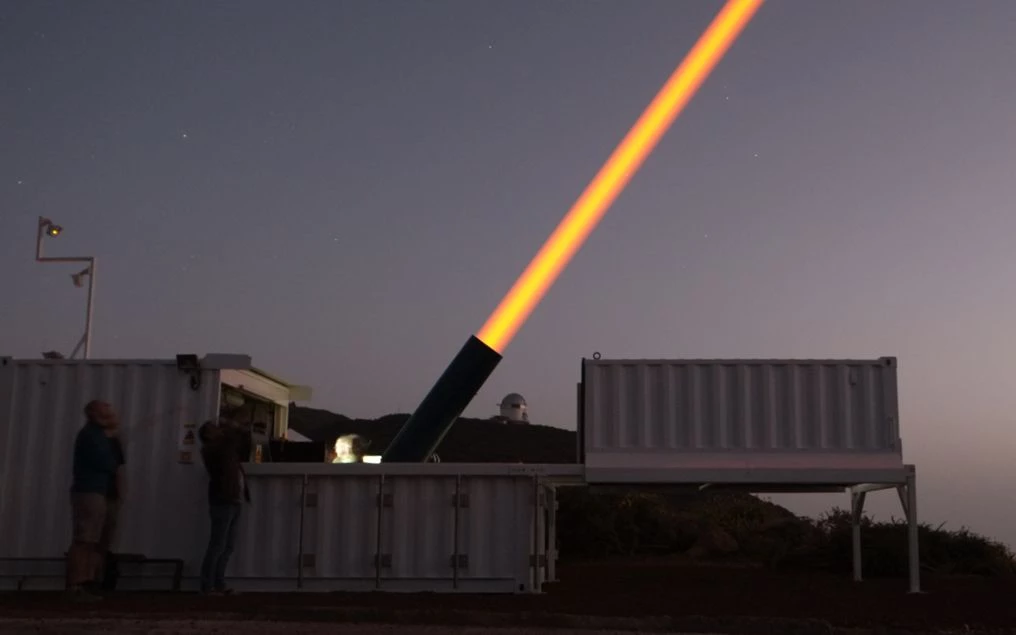
Durham University and Viasat collaborate following six figure investment
Researchers at Durham University are working with global satellite communications company Viasat to understand atmospheric turbulence in free-space optical (FSO) communications.
Leveraging a £200k investment from Viasat, Durham University will focus on developing free-space optics (FSO) turbulence channel characterisation for optical feeder links. This research will support delivery of a software-controlled telescope for turbulence characterisation, as well as prediction modelling.
Researchers from Durham University are embarking on the first phase of a project to measure and mitigate optical turbulence in the Earth’s atmosphere to support Viasat’s work in FSO communications networks.
Free-space optical communication is a revolutionary way of using lasers to send and receive data in point-to-point terrestrial, space, and space to ground links. Using ultra-high bandwidths, laser communications provide larger and faster data transfer rates. In addition, FSO communication provides another layer of security with optical links being highly resistant to jamming, spoofing, and electro-magnetic interference.
Atmospheric disturbances, such as clouds and turbulence, can disrupt laser signals as they propagate through the atmosphere. This has slowed the adoption of FSO technology as these disturbances are hard to monitor and predict.
To overcome this, researchers at Durham University have developed the only optical turbulence measurement device capable of measuring continuously, day and night, and in strong turbulence conditions.
Project lead, associate professor James Osborn of Durham University’s Department of Physics, said: “I’m incredibly excited to be working with the team at Viasat to combine our expertise on a project that will help shape how satellites communicate in the future. This is an important step in making FSO technology become more commercially viable and easier to deploy.”
The team will work with Viasat to further develop Durham’s measurement software so that it can be used and easily understood by non-specialists. This state-of-the-art forecasting tool will optimise Viasat’s ground station design, as well as support operational decision-making such as network switching between ground stations based on atmospheric conditions.
“We’re excited to collaborate with Durham University and their leading work on free space optics,” said Dr Anton Monk, vice president & CTO for Wireless Initiatives, Viasat. “We are committed to investing in key research and development for satellite technology, and Durham University in the United Kingdom was a clear choice, given their leading-edge work on free space optics.
“The results of their innovative research will be influential in the satellite communications industry, as we collaborate and bring their work from the lab to the marketplace.”
Professor Kieran Fernandes, associate pro vice-chancellor (development & engagement), Durham University said: “As partners, we will co-develop forecasting tools that will help Viasat with ground station design and operational decision-making. We are looking forward to evolving this partnership that delivers research in free-space optical communication networks at a global scale.”
By Mark Adair – Correspondent, Bdaily
- Add me on LinkedIn and Twitter to keep up to date
- And follow Bdaily on Facebook, Twitter and LinkedIn
- Submit press releases to editor@bdaily.co.uk for consideration.
Looking to promote your product/service to SME businesses in your region? Find out how Bdaily can help →
Enjoy the read? Get Bdaily delivered.
Sign up to receive our daily bulletin, sent to your inbox, for free.




 test article 123456789
test article 123456789
 hmcmh89cg45mh98-cg45hm89-
hmcmh89cg45mh98-cg45hm89-
 test456456456456456456
test456456456456456456
 test123123123123123123
test123123123123123123
 test xxxdiosphfjpodskhfiuodsh
test xxxdiosphfjpodskhfiuodsh
 Savour the flavour: North Tyneside Restaurant Week returns for 2024
Savour the flavour: North Tyneside Restaurant Week returns for 2024
 Six steps to finding the right buyer for your business
Six steps to finding the right buyer for your business
 Stephen signs off on a special night
Stephen signs off on a special night
 Life’s a Peachaus: Gillian Ridley Whittle
Life’s a Peachaus: Gillian Ridley Whittle
 Making a splash: Phil Groom
Making a splash: Phil Groom
 Making workplace wellbeing a priority
Making workplace wellbeing a priority
 A record of delivery, a promise of more: Ben Houchen
A record of delivery, a promise of more: Ben Houchen